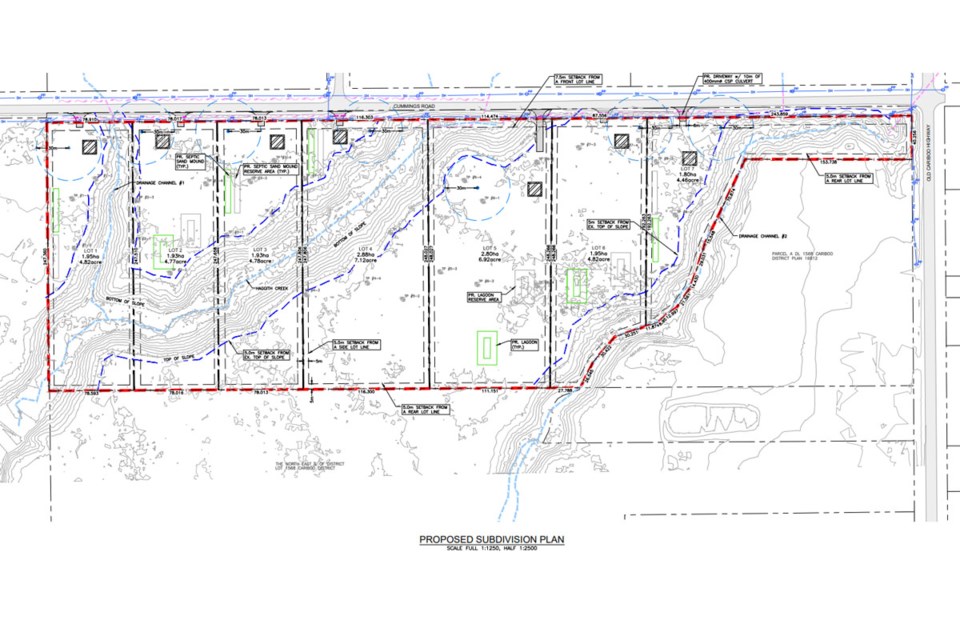The directors of the Regional District of Fraser-Fort George want more information, before they’re prepared to sign off on a proposed development variance permit to allow the use of sand mound sewage treatment systems for a proposed subdivision in Pineview, east of Prince George.
Mackenzie-based developer Citra Logistics Ltd. is looking to subdivide a 15.8 hectare (39 acre) lot on Cummings Road, near the intersection with Old Cariboo Highway and Pineview Elementary School, into seven rural residential lots ranging in size between 1.8 ha (4.4 acres) and 2.88 ha. (7.1 acres).
Consultants L & M Engineering, acting as agents for the developer, are recommending the use of sand mound sewage systems on four of the lots. Sand mound systems for individual homes are excluded from the district’s Subdivision Servicing Bylaw “because they were considered more expensive/complicated to install and maintain than basic septic fields and lagoons,” according to a report which went before the board on Thursday.
“I have issues with this proposal. It relies on those so-called sand mound sewage systems,” director Bill Empey, who represents the Pineview area, said. “What happens to drainage when the sand mound gets plugged up or doesn’t get properly maintained?”
Haggith Creek runs through four of the seven proposed lots, and another drainage channel runs along the back side of two other lots.
Sewage lagoons have been allowed on similar-sized lots in the area previously, he added.
“I know the lagoon system is the common and accepted method of sewage disposal, and it is working,” Empey said.
Empey put forward a motion to postpone consideration of the development variance permit, to allow the proponent and district administration time to provide more information on the sand mound sewage treatment plans. The motion was carried by the board.
Terry Burgess, alternate director for Area G Crooked River-Parsnip, said he’s heard of three sand mound systems in his area and “out of the three of them, two of them have significant problems.”
One of the systems only worked for 10 years before causing a sewage spill, he added.
District general manager of development services Kenna Jonkman said regulation and oversight of sewage systems is the responsibility of Northern Health, and the district doesn’t have the in-house expertise to assess the viability of one type of sewage system versus another.
In a letter to the regional district, L & M Engineering engineer Jamie Schenkeveld said that sand mound sewage systems are “an excellent low-maintenance alternative to evaporation lagoon sewage systems.”
As the sewage flows through the sand, it treats the sewage passively without the need for an advanced secondary treatment.
L & M Engineering designs roughly 30 sewage systems in northern B.C. each year, he added, including sand mound and sand trench systems.
“(The) sand significantly improves effluent quality when it meets the native soils and mitigates the risk of organic overloading of native soils and potential adverse impacts to both surface and groundwater sources,” Schenkeveld wrote. “Furthermore, sand mound systems also inherently protect disposal beds against saturation due to excessive rainfall, overuse of the septic system, or spring melt conditions by raising the bed above the existing ground to prevent infiltration and by controlling the dosing rate to the soils to optimize treatment.”



.png;w=120;h=80;mode=crop)